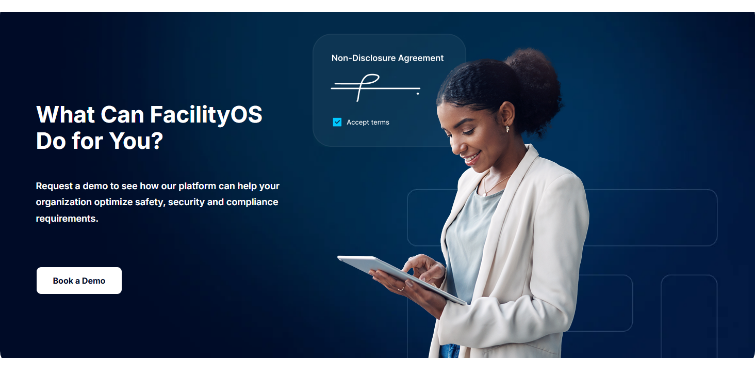Tailoring Emergency Preparedness Responses to Different Incident Types in Healthcare
Healthcare facilities face a unique and complex challenge when it comes to emergency preparedness. Unlike other industries, hospitals and healthcare institutions must maintain critical operations even during crises, protecting vulnerable patient populations while coordinating responses across diverse teams. The key to effective emergency management in healthcare lies not in one-size-fits-all approaches, but in developing tailored response protocols for different incident types.
The Critical Need for Incident-Specific Emergency Planning
Healthcare emergency preparedness has evolved significantly since the early 2000s. According to research published in the Nursing Clinics of North America, federal funding through programs like the Hospital Preparedness Program (HPP) and Public Health Emergency Preparedness (PHEP) has driven substantial improvements in how healthcare organizations approach emergency management. However, one critical lesson has emerged: different emergencies demand different responses.
A fire requires immediate evacuation procedures. A chemical spill demands containment and decontamination protocols. An active shooter situation calls for lockdown procedures. Severe weather events may necessitate shelter-in-place protocols or planned evacuations. Each scenario requires distinct communication strategies, personnel assignments, and operational workflows.
The challenge for healthcare facilities is that patient care cannot pause during emergencies. This creates a tension that doesn't exist in most other industries—emergency response must be swift and effective while maintaining continuity of critical medical services.
Understanding the Four Phases of Healthcare Emergency Management
Emergency management in healthcare follows four distinct phases: mitigation, preparedness, response, and recovery. Each phase plays a vital role in building resilient healthcare systems.
Mitigation
This phase involves identifying potential risks and taking steps to reduce their impact. For healthcare facilities, this includes conducting comprehensive hazard vulnerability analyses (HVAs) that assess everything from natural disaster risks to infrastructure vulnerabilities. The goal is to minimize the likelihood and severity of incidents before they occur.
Preparedness
Preparedness encompasses the planning, training, and resource allocation needed to respond effectively. This is where incident-specific protocols become critical. Healthcare facilities must develop detailed emergency action plans for various scenarios, establish clear communication channels, and ensure all personnel understand their roles during different types of emergencies.
Response
The response phase is where tailored protocols prove their worth. When an emergency occurs, teams must execute pre-defined procedures specific to that incident type. This requires immediate access to the right information, rapid communication across departments, and real-time accountability for all personnel—including employees, patients, visitors, and contractors.
Recovery
Recovery involves returning to normal operations while documenting lessons learned. For healthcare facilities, this phase also includes critical regulatory compliance requirements, as organizations must maintain detailed records of emergency events and responses.
The Role of Healthcare Coalitions in Emergency Preparedness
One significant development in healthcare emergency preparedness has been the formation of healthcare coalitions. These partnerships between hospitals, public health departments, emergency medical services, and other healthcare entities enable coordinated responses across entire communities.
Healthcare coalitions provide several benefits. They facilitate resource sharing during emergencies, enable coordinated communication across multiple facilities, support joint training and exercise programs, and help establish regional response capabilities that individual facilities cannot achieve alone.
Research indicates that coalitions enhance healthcare system resilience, the ability to quickly recover and maintain operations in the face of disruption. These collaborative relationships prove especially valuable during large-scale emergencies that overwhelm single facilities.
Critical Components of Incident-Specific Emergency Response
Effective incident-specific emergency response requires several key components working together seamlessly:
1. Customized Emergency Profiles
Different emergencies require different response workflows. A comprehensive emergency management system should allow facilities to create distinct profiles for various scenarios, like fire, chemical exposure, severe weather, security threats, and more. Each profile should specify notification recipients, communication channels, assembly points, and response procedures tailored to that specific incident type.
2. Targeted Mass Notification
During emergencies, clear and immediate communication is critical. Healthcare facilities need the ability to instantly alert everyone on-site—employees, visitors, patients who can be moved, and contractors—via multiple channels including SMS, email, and in-app notifications. The content and recipients of these alerts should vary based on incident type.
For example, a chemical spill in one wing may require targeted alerts to personnel in affected areas with specific safety instructions, while a facility-wide fire alarm demands immediate evacuation notifications to everyone present.
3. Real-Time Personnel Accountability
One of the most challenging aspects of healthcare emergency response is accounting for everyone on-site. Unlike typical office environments, healthcare facilities have constantly changing populations: patients being admitted and discharged, visitors coming and going, contractors working on various projects, and staff rotating through shifts.
Traditional paper-based accountability methods—clipboard roll calls at assembly points—are slow, error-prone, and often incomplete. Digital mustering systems that provide real-time visibility into who is accounted for and who remains missing are essential for effective emergency response.
4. Zone-Based Building Sweeps
During evacuations, ensuring that all areas of a facility have been cleared is critical. Healthcare facilities are often large, complex buildings with restricted areas, multiple wings, and numerous rooms. Systematic building sweeps organized by zone ensure thorough coverage while providing real-time status updates to incident commanders.
Digital coordination of building sweeps allows safety officers to update clearance status via mobile devices, request assistance if needed, and provide incident commanders with complete visibility into evacuation progress across the entire facility.
5. Two-Way Emergency Communication
Effective emergency response requires more than broadcasting alerts—it demands two-way communication. Personnel need the ability to confirm receipt of instructions, report their status, request assistance, and provide situational updates to incident commanders.
This bidirectional communication becomes especially important in healthcare settings where some personnel may be unable to immediately evacuate due to patient care responsibilities. They need the ability to communicate their situation and receive guidance specific to their circumstances.
Healthcare Compliance & Documentation Requirements
Healthcare facilities face rigorous regulatory requirements for emergency preparedness. Organizations must demonstrate compliance with standards from OSHA, The Joint Commission, and the Centers for Medicare and Medicaid Services (CMS).
Recent CMS regulations require healthcare facilities to develop emergency preparedness plans based on comprehensive risk assessments, implement communication plans for coordinating with local and state partners, maintain policies for evacuating patients when necessary, and conduct training and testing of emergency procedures at least annually.
To meet these requirements facilities must maintain detailed, auditable records of all emergency drills, real incidents, and preparedness activities. Manual documentation processes struggle to capture the comprehensive data needed for regulatory compliance.
The Challenge of Visitor & Contractor Accountability
One often-overlooked aspect of healthcare emergency preparedness is accounting for non-employees. Hospitals typically maintain employee rosters for emergency accountability, but visitors and contractors present a significant challenge.
During any given shift, a hospital may have dozens or hundreds of visitors—family members, vendors, delivery personnel, and contractors performing maintenance or construction work. Without integrated systems that track visitor check-ins and contractor presence, these individuals may be overlooked during emergency accountability processes.
This gap represents a serious safety and liability concern. Effective emergency management must ensure that every person on-site—regardless of their status—is accounted for and receives appropriate emergency notifications and instructions.
Learning from Real-World Healthcare Emergencies

Real-world emergencies provide valuable lessons for healthcare emergency preparedness. Hurricane Sandy in 2012 demonstrated the critical importance of hospital evacuation planning and inter-facility coordination. Multiple New York City hospitals required emergency evacuation due to flooding and power failures, forcing rapid patient transfers to other facilities.
The success of these evacuations relied heavily on pre-established healthcare coalition relationships that enabled coordinated patient placement, resource sharing, and communication across multiple organizations. The experience underscored that emergency preparedness cannot be an isolated, single-facility effort.
Similarly, the COVID-19 pandemic revealed gaps in healthcare emergency communication systems and the need for rapid deployment of updated protocols across entire organizations. Facilities that could quickly implement new emergency profiles and communicate changing procedures to all personnel adapted more successfully than those relying on manual communication methods.
Moving Toward Digitized Emergency Management
The evolution of healthcare emergency preparedness increasingly points toward digitized systems that replace manual, paper-based processes. Survey data from emergency management professionals reveals that the vast majority still rely on manual roll calls or spreadsheets for emergency accountability, methods that are time-consuming and error-prone.
The challenges healthcare facilities face during emergencies—coordinating real-time communication across teams, maintaining complete records for compliance, and accounting for all personnel including visitors—all point to the need for integrated digital solutions.
Modern emergency management platforms can address these challenges by automating notification and communication processes, providing real-time visibility into personnel status and location, maintaining comprehensive, auditable records of all emergency events, and integrating with existing systems like visitor management to ensure complete accountability.
Implementing Effective Incident-Specific Emergency Preparedness
For healthcare facilities looking to enhance their emergency preparedness with incident-specific protocols, several best practices emerge:
- Conduct comprehensive risk assessments: Use hazard vulnerability analyses to identify the specific threats your facility faces based on location, infrastructure, and operational characteristics.
- Develop detailed, scenario-specific protocols: Create distinct emergency response procedures for each major incident type, specifying different notification strategies, assembly points, and response workflows.
- Engage with healthcare coalitions: Participate actively in regional healthcare coalitions to coordinate preparedness efforts, share resources, and establish mutual aid agreements.
- Include all populations in planning: Ensure emergency protocols account for employees, patients, visitors, and contractors. Integrate visitor management with emergency response systems.
- Prioritize communication systems: Invest in reliable, multi-channel communication platforms that enable both mass notification and two-way messaging during emergencies.
- Test and refine regularly: Conduct frequent drills for different emergency scenarios, document lessons learned, and continuously update protocols based on findings.
- Maintain compliance documentation: Implement systems that automatically capture detailed records of all emergency events and drills for regulatory compliance.
- Train comprehensively: Ensure all personnel understand their roles in different emergency scenarios through regular training and clear, accessible emergency action plans.
The Future of Healthcare Emergency Preparedness
As healthcare facilities face increasingly complex threats—from climate change driving more severe weather events to emerging infectious diseases to infrastructure vulnerabilities—the need for sophisticated, incident-specific emergency preparedness will only grow.
The healthcare organizations that succeed in protecting patients, staff, and visitors will be those that embrace digitized emergency management systems, participate actively in healthcare coalitions, and continuously refine their incident-specific protocols through regular testing and improvement cycles.
Public Health Ontario defines emergency preparedness as "the knowledge and capacities and organizational systems developed by governments, response and recovery organizations, communities and individuals to effectively anticipate, respond to, and recover from the impacts of likely, imminent, emerging, or current emergencies." This definition emphasizes that preparedness is not a static plan but an ongoing process of building capabilities and systems.
For healthcare facilities, this means moving beyond generic emergency plans toward dynamic, incident-specific protocols supported by modern technology platforms that enable the speed, coordination, and accountability that healthcare emergency response demands.
A Modern Approach to Healthcare Emergency Management
Healthcare emergency preparedness has come a long way from paper evacuation plans and manual roll calls. Today's healthcare facilities need comprehensive digital solutions that can adapt to different incident types while maintaining the speed and coordination that healthcare emergencies demand.
FacilityOS's EmergencyOS provides healthcare facilities with the system needed to implement truly incident-specific emergency response. Through customizable emergency profiles, facilities can configure distinct workflows for fires, chemical exposures, severe weather, security threats, and other scenarios. Mass notification systems deliver targeted alerts to all personnel—including visitors and contractors—via SMS, email, and mobile app. Real-time digital mustering replaces error-prone paper roll calls, while zone-based building sweep coordination ensures systematic facility clearance during evacuations.
Perhaps most importantly, EmergencyOS automatically maintains comprehensive audit trails of all emergency events, drills, and communications by providing the documentation healthcare facilities need for regulatory compliance with OSHA, Joint Commission, and CMS requirements. By integrating with existing visitor management systems, EmergencyOS ensures that every person on-site receives appropriate emergency notifications and is accounted for during incidents.
Stay updated with industry insights, success stories, and more by following us on social media for the latest FacilityOS content.
Table of Contents
Jeffrey Kinzler





 Follow us on Facebook
Follow us on Facebook  Follow us on X
Follow us on X
 Follow us on LinkedIn
Follow us on LinkedIn